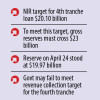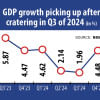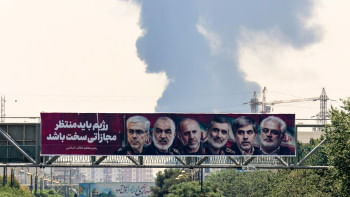Managing the politics of budget-making

The presentation of the national budget is an important annual event. The government conducts numerous consultation sessions with a wide-ranging group of stakeholders. Many views, hopes, aspirations, and criticisms are exchanged through this consultation process. In the end, the budget that is approved by the parliament is a political document. In an election year, the politically-determined contents of the budget get added prominence. This is not unique to Bangladesh.
Yet, the forthcoming national budget for FY2023-24 cannot be a business-as-usual budget and needs some deft management in view of the ongoing macroeconomic instability, the requirements of the IMF loan, the uncertain global economic and financial environment, and the risk of derailing medium-term growth prospects.
Being political in nature, budget-making is an art and not a science. Even so, it must take into account the prevailing socioeconomic realities and the implementation experience of the recent budgets.
The budget means different things to different people. In the process, there is a risk that the focus and core messages of the budget might get diluted. The current macroeconomic situation is uncomfortable. Inflation is high, difficulties regarding balance of payments persist with a continued loss of foreign exchange reserves, volume of import is constrained, tax revenues as a share of GDP are low, and fiscal deficits have been increasing. These factors suggest that the main focus of the FY24 budget must be on economic stabilisation.
While there are many unmet development needs owing to resource constraints, the prevailing macroeconomic instability requires an austere budget that is focused on reducing the demand pressure on inflation and balance of payments.
In this environment, doing an expansive budget financed by rising fiscal deficits using bank borrowings will be a hugely negative approach. While there are many unmet development needs owing to resource constraints, the prevailing macroeconomic instability requires an austere budget that is focused on reducing the demand pressure on inflation and balance of payments. Attempts to finance higher spending through bank-financed fiscal deficits will simply fuel further inflationary pressure and contribute to import pressure on the dwindling forex reserves.
Target for fiscal deficit: Research shows that fiscal deficit as a share of GDP has been rising steadily from a low of 1.1 percent of GDP in FY14 to an estimated 5.3 percent of GDP in FY23. While the fiscal deficit of 5.3 percent of GDP is not excessively high, in the present context of high inflation, a rising fiscal deficit is not consistent with the task of reducing demand. Given this situation, it will be prudent to limit the fiscal deficit within five percent of GDP in the forthcoming FY24 budget.
Financing of fiscal deficit: Data shows that over the past two fiscal years, there was a progressive increase in the recourse to bank financing of the fiscal deficit. Indeed, the average growth of credit to the government has been in the 30 percent range since June 2021. This has added to the growth of total credit at a time when the rate of credit expansion should be curbed to fight inflation. For the FY24 budget, all efforts should be made to use low-cost domestic and foreign borrowing to finance the deficit. Establishing a well-functioning T-bill market with access to the general public will help reduce the demand pressure of the budget deficit.
Resource mobilisation: The inability to introduce meaningful tax reforms over the past several years has constrained tax revenue mobilisation. Tax revenue as a share of GDP has been virtually stagnant at around 7-7.5 percent of GDP. Ad-hoc tax measures announced during the budget seasons have failed to make a dent in the resource mobilisation effort.
Meaningful reforms require an overhaul of the tax system that involves major institutional changes in tax planning and tax administration. These reforms include separation of tax planning from tax collection; modernisation of the National Board of Revenue (NBR) through simplification and digitisation of tax administration; eliminating expenditure accounting requirement in tax filing; removing the interface between taxpayer and tax collector; adopting a true self-assessment system with enforcement through selective and productive computer-based audits; converting the NBR from a tax policing department to a tax service agency; introducing a proper property tax system; and full implementation of the 2012 VAT law. These are far-reaching reforms and can be best introduced through a detailed workout of a modern tax system designed by an Expert Tax Reform Commission (TRC). Similar TRC-based reforms have helped to modernise the Indian tax system and raise the tax-GDP ratio.
In the meantime, for FY2023-24 budget, some of the easy reforms can be introduced by doing away with the expenditure accounting requirement of the tax form, introducing online tax submission and payments, and conducting selective but productive audits focused mainly on the large taxpayer units. All efforts to eliminate rent-seeking venues for tax collectors and avoid harassment of taxpayers will substantially boost tax revenues by providing incentives for voluntary tax compliance and reducing revenue leakages.
Some minimal state-owned enterprise (SOE) reforms can also be introduced to improve their financial performance by implementing a hard budget constraint, improving the pricing policies for SOEs, and strengthening corporate governance.
With these reforms, it should be possible to increase the tax effort from 7.1 percent of GDP estimated for FY23 to 7.6 percent of GDP in FY24. Non-tax revenues can be increased from one percent to 1.2 percent of GDP.
Size of the budget: It may be politically appealing to announce a large budget in an election year. However, it would be imprudent from the standpoint of macroeconomic management and would undermine the political value of a large budget by increasing inflationary pressure. The size of the budget should depend upon a realistic assessment of the likely magnitude of tax and non-tax resources and the size of the fiscal deficit. As noted, with some minimal reforms, the total revenue can be increased from 8.1 percent of GDP in FY23 to 8.8 percent of GDP in FY24.
Applying a budget deficit target of five percent of GDP, total size of the FY24 budget would amount to about 13.8 percent of GDP. Converting this in terms of taka by using the projected GDP for FY24, this amounts to about Tk 7 trillion. This will be about 19 percent higher than the estimated budget implementation for FY23.
It is important to note that this size of the budget is contingent upon implementing the suggested reforms for strengthening revenue mobilisation. If, for example, the proposed reforms are not implemented and total revenues in FY24 remain unchanged at 8.1 percent of GDP as in FY23, the size of a prudent budget would fall to Tk 6.7 trillion, which is about 13 percent higher than the estimated budget outcome for FY23.
Expenditure priorities: Since some 50 percent of the budget is already committed to fixed spending items (wages and salaries, civil service pensions, materials and supplies, security spending, and interest cost), the flexibility for strengthening expenditure priorities is rather limited. Even so, the government must make an effort to curb subsidies and phase the implementation of capital-intensive large infrastructure projects, while increasing allocations for health, education, irrigation and flood control, water supply, and social protection. Along with efforts to lower inflation, these spending can also help the government politically by improving the income levels of the poor and vulnerable.
The tendency to accelerate spending on large, visible and long gestational infrastructure projects may appear politically appealing in an election year, but in reality, they do not create immediate benefits for the common citizens. Income transfers from social protection programmes, and spending on irrigation, flood control and water supply are where benefits are more direct and immediate.
Dr Sadiq Ahmed is vice-chairman of the Policy Research Institute of Bangladesh (PRI).

 For all latest news, follow The Daily Star's Google News channel.
For all latest news, follow The Daily Star's Google News channel. 










Comments